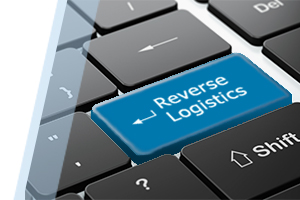
The Secrets to a Solid Reverse Logistics Strategy
What happens to “unwanted” items after you bring them back to the store? The movement of goods that have been returned or recalled is also an important component of supply chains. Just as a logistics strategy is central to the streamlined passage of goods from suppliers to customers, a reverse logistics strategy is essential for smooth movement in the opposite direction.
While it used to be an afterthought, reverse logistics is starting to play a larger role in many supply chains. Reverse logistics is about making strategic decisions when your product reaches the end of its life. Manufacturers need to ask, “Is there value I can gain if the product is returned to me in an end of life situation?”
How to Create a Successful Reverse Logistics Strategy
Each company’s strategy for handling returns, recalls, and exceptions is unique, but to be successful, they require some level of visibility and control. Without one or the other, you may be opening your business up to unnecessary liability.
Visibility into Logistics Processes
As you might guess, this is all about knowing where your product is. However, you can break it down even further. Visibility can mean understanding what is coming back to you, when it should arrive, and where it is coming from. But another—and sometimes forgotten—aspect of visibility is what happens when it does arrive.
It’s important to have a timely process in place to validate the item that came back is what it should be. Without this kind of visibility, the video game console or small appliance you expected to be returned under warranty could, in fact, be a box of bricks or an old pair of shoes—and the customer who returned it three months ago is now long gone with a voucher for a new product.
This brings us to control.
Control Movement of Goods
Controlling the return journey of a product is just as important as controlling its initial outbound trip. Creating a policy about who can return items, and when, is really the foundation of any reverse logistics strategy.
But a successful strategic approach also includes rules about which items should be sent back: Some companies may decide that rather than having every single product returned, there are situations when it’s okay for a product to be disposed of or donated by the consumer, retailer, or even carrier. A reverse logistics strategy with control ensures that these types of decisions are made wisely and ahead of time.
How do I achieve higher visibility and control?
It’s all about capturing the right data. After you have rules in place for what happens to products, you need data to ensure the rules are being followed. Whether you’re tracking the chain of custody on a refused product, confirming the disposition of expired goods, or creating unique authorization numbers for recalled items, the right data can protect your company from risk and lead to continuous improvement efforts.
This is about more than simply executing one-time events; watching reverse logistics data over time can show where problems repeatedly occur in the supply chain. For example, seeing consistent damages may help identify a packaging problem, noticing high refusals can lead to conversations with receivers about acceptance policies, and identifying where returned items are coming from can help you stay proactive. More than just capturing the products, reverse logistics should be about driving avoidance in order to minimize returns all together and, ultimately, save your business time, money, and inconvenience.
How do you maintain control and visibility over your reverse logistics strategy? Share your comments below.
Reverse logistics strategies can be difficult to develop and implement on your own. Read more about how an experienced 3PL can streamline the creation and adoption of a successful reverse logistics strategy.



